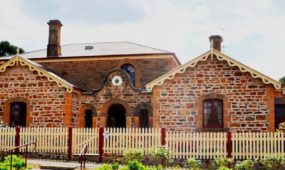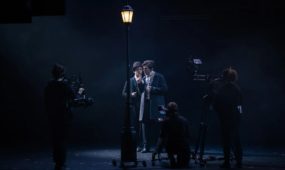Unlikely Olympic heroes debut on big screen
Arts
AN amazing Olympic story of courage, skill and determination against impossible odds is set to fill its place in the pages of history.

Sign up to receive notifications about new stories in this category.
Thank you for subscribing to story notifications.
The Murray Cods were an unfashionable bunch of working class rowers from a small town on the banks of Australia’s longest river.
In a sport dominated by elitist city clubs, the team from Murray Bridge – a town 75km east of Adelaide – rose to greatness in the early 1900s to eventually represent Australia at the 1924 Paris Olympics.
A documentary about The Cods, Paris or the bush, will premiere in Murray Bridge this weekend, finally telling the full story of the eight’s incredible run.
Bilsborow
“They looked set for great careers and then the war intervened and five of them went off to fight. One got killed in France, one was injured in Gallipoli and another came back with schrapnel lodged in his back,” Groom said.
“They were the best in Australia and they were only two or three seconds off the world record.”
Despite their dominance, the Australian Olympic Committee insisted they must beat the nation’s top crews over the Olympic distance of 2000 metres to ensure their Olympic berth – a feat they managed comfortably in front of 20,000 spectators along Adelaide’s Port River in May 1924.
The South Australian community then rallied behind The Cods, raising the £2500 needed to get to Paris.
But Groom said limited training opportunities on the long boat journey to France, illness among four crew members and the 26 miles they had to row on the River Seine just to get from their base to the start of the race in Paris took a heavy toll.
“Their careers were interrupted by the war and by the time they got to the Olympics some of them were in their 40s – they were still the best in Australia but because of a number of factors they didn’t perform as well as they could have in Paris,” he said.
The Murray Cods – who often raced with a stuffed Murray Cod fish attached to the front of their boat – finished second to eventual silver medallist Canada in one of their heats but failed to make the final in Paris.
Groom said the arrival of coach Teddy Hicks from Tasmania was a key to The Cods remarkable success.
“He came to the club and brought with him a new way of rowing and that was the use of the slides. Most of the other clubs around Australia resisted the slides because they were still rowing the English orthodox way,” he said.
“Teddy got them to row vigorously by using the legs and the arms – they were labelled raggedy but it was just that they were rowing in a modern style and the rest of Australia hadn’t cottoned on to it yet.
“He used to say mileage makes champions and he used to take them on 60 mile rows up and down the Murray. So I reckon when they came up against city-based crews who were just doing short rows of 500 metres or something they were just so fit they could outclass everyone.”
Groom said the purpose of the documentary was to tell The Cods’ story to elevate it to its rightful place in Australian sporting folklore.
He said there would be a campaign later this year to have The Cods inducted into the Sports South Australia Hall of Fame.
“We think The Cods’ story has been almost willfully forgotten,” he said.
“This is South Australia’s story and it’s been demoted somehow and we’ve got to try to elevate it to its rightful position.
Groom intends to now write a film script in a bid to turn The Cods’ story into a feature film.
About 300 guests from around Australia will attend the April 23 Murray Bridge Premiere including many descendants of The Cods.
Paris or the bush
Murray Bridge rower James McCrae will compete for Australia at the Rio Olympics this year.
Jump to next article



